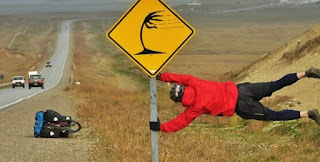Living in Lubbock, Texas means learning to live with wind. A lot of it. We’re not talking gentle breezes—we’re talking 40 mph gusts that can knock your hat off, slam your door shut, or, in the case of cyclists, turn a ride into a full-on battle.
But here’s the truth: for those of us who ride, those high winds can actually be a gift in disguise.
Wind as a Training Partner
I’ve trained in winds strong enough to make you question your life choices—20 miles straight into a headwind that felt like climbing a mountain that never ends. No breaks. No relief. Just legs grinding and lungs burning.
But you know what? It’s one of the best workouts you’ll ever get.
Cycling in strong winds builds:
-
Endurance – You push longer and harder.
-
Strength – Every pedal stroke takes more muscle.
-
Mental toughness – It’s you vs. the wind, and you learn how to win.
Treat Wind Like Hills
Here’s a mindset shift that helps: think of wind like terrain.
-
Headwind = uphill.
Shift into a lower gear, stay steady, and grind it out. -
Tailwind = downhill.
Enjoy the ride. Let the wind carry you. Recover. Fly.
Using wind this way makes your route more dynamic—and more rewarding.
Bike Handling Gets Better, Too
One thing I’ve noticed over the years is that wind riding teaches you control. You learn how to:
-
Stay loose but steady on the handlebars
-
Adjust your body position for balance
-
React quickly to sudden gusts or swerves
That kind of skill carries over to all kinds of riding—group rides, descents, rough terrain, even traffic.
Tips for Safe Riding in High Winds
-
Dress smart – Wind-blocking layers help keep your core warm.
-
Stay visible – Gusts can push you around, so be sure cars can see you.
-
Check your bike – Make sure tires, brakes, and drivetrain are in good shape.
-
Use the right route – Avoid open highways with crosswinds; find wind-blocking routes if possible.
-
Keep a firm grip – But don’t death-grip the bars. Stay relaxed and reactive.
And always—check the forecast. If winds are dangerously high or gusty, don’t take unnecessary risks. There’s no shame in switching to the trainer for a day.
Final Thoughts
Training in wind isn’t easy, but it’s a challenge worth embracing—especially if you live in a place like Lubbock, where the wind isn’t going anywhere.
So the next time the gusts start howling, don’t dread it—use it. Every hard mile into the wind is making you stronger, tougher, and more prepared for whatever the road throws at you.
Because if you can ride in Lubbock wind, you can ride anywhere.

Comments
Post a Comment